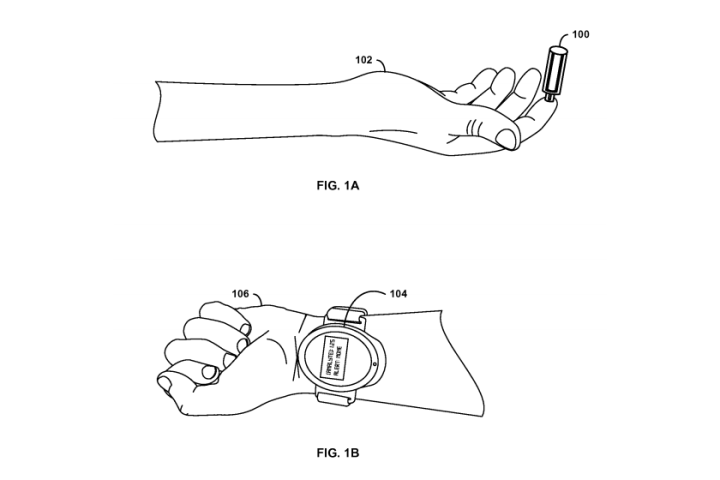
The patent, which was published December 3, describes a device that uses “an abrupt surge of gas” to give a micro-particle enough momentum to pierce a person’s skin. Then a “micro-emergence of blood” is drawn into a barrel.
There are two examples shown as illustrations in the patent: One looks like a traditional blood-drawing device that a person can place on the tip of their finger, while the alternative example is a wrist-based device. Google notes that the latter device could be used manually or configured to draw blood automatically.
The company is obviously mum about its intentions for this patent, which is still pending. A spokesperson replied to an inquiry from The Verge by saying “we hold patents on a variety of ideas — some of those ideas later mature into real products or services, some don’t. Prospective product announcements should not necessarily be inferred from our patents.”
The patent was filed on May 28, 2014, well before Alphabet Inc. was announced as Google’s parent company on August 10, 2015. In the announcement, CEO Larry Page pointed for “companies that are pretty far afield of our main Internet products” as the ones housed in Alphabet apart from Google.
“What do we mean by far afield? Good examples are our health efforts: Life Sciences (that works on the glucose-sensing contact lens), and Calico (focused on longevity),” Page wrote in the Alphabet announcement. The needle-free blood-drawing device, if it ever sees the light of day, would fall into Alphabet’s domain.


